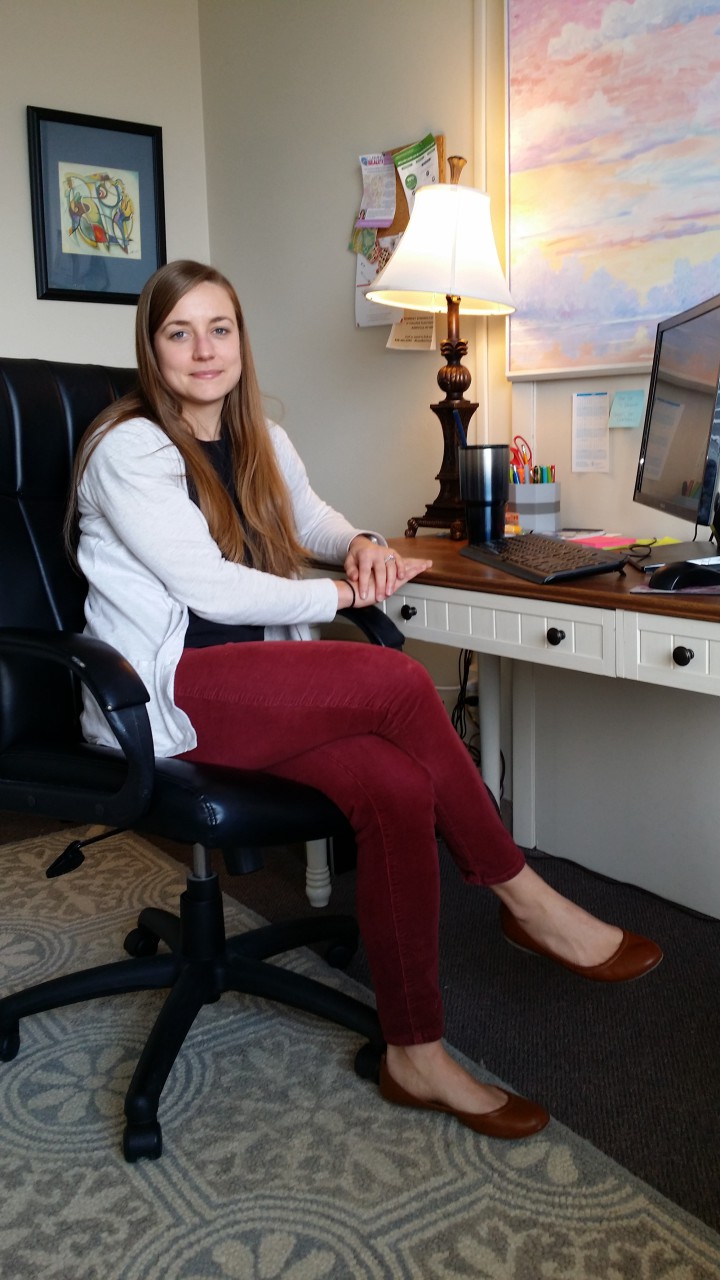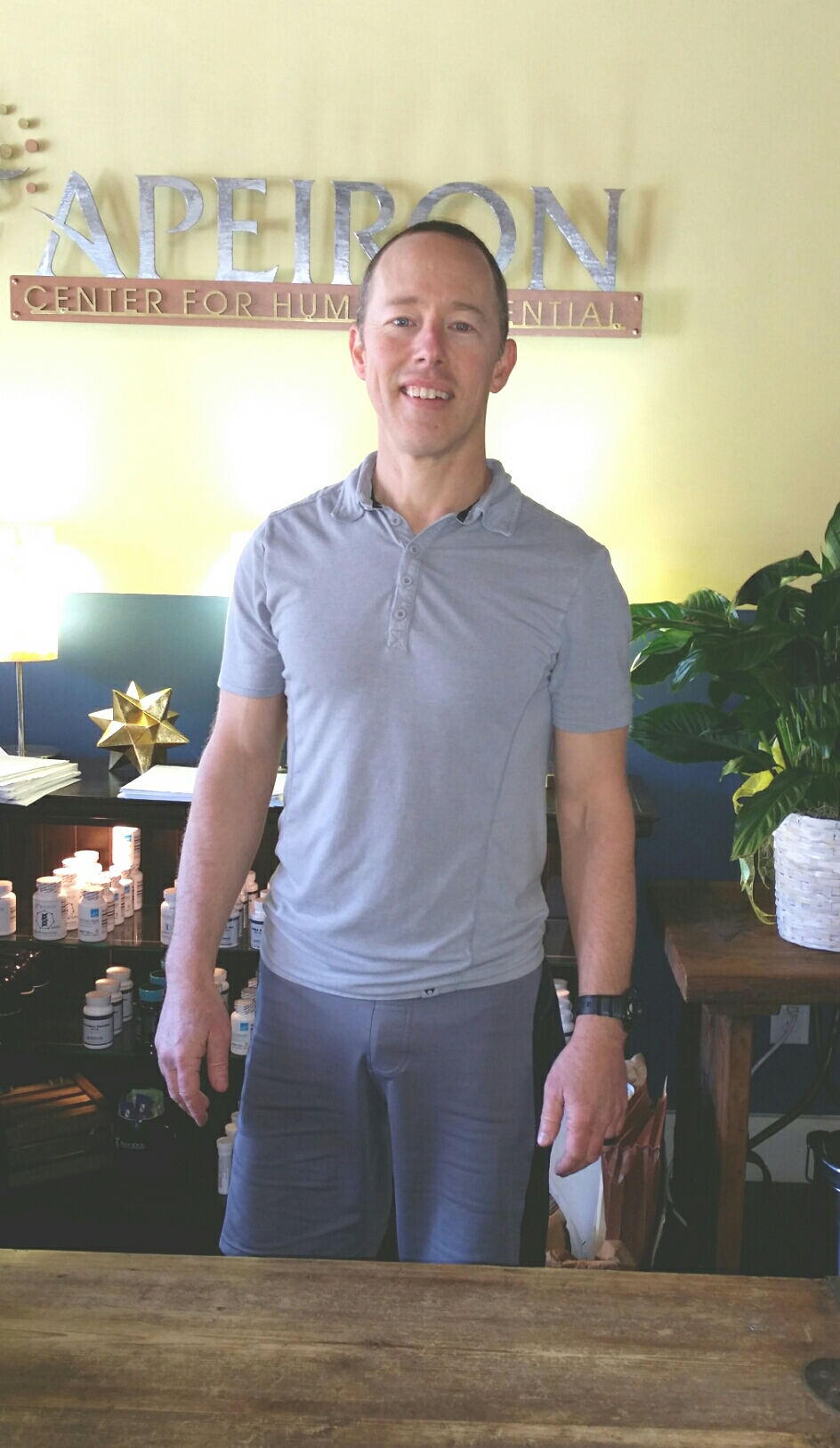Dr. Daniel Stickler, founder and chief medical officer of Apeiron Center for Human Potential in Asheville, remembers a time when he ate whatever he wanted. “Back in 2003, I was eating pizza and drinking Mountain Dew,” he says. At the time, he was running marathons.
But that year, he made some drastic changes. He had first read about the concept of paleo nutrition in a 2002 article in The New York Times. After hearing a lecture on the “caveman diet” by nutritionist and author Robert Crayhon, he decided to give it a try. “I shifted to [eating] paleo, started doing CrossFit, and I went from 26 percent body fat down to 8 percent.”
He might not have realized it at the time, but “ancestral nutrition” — the paleo way of eating — would go on to gain popularity with a wide range of health enthusiasts and professionals. Drawing inspiration from the whole, unprocessed foods our ancestors ate, paleo diet adherents believe that sticking close to a similar regimen offers a range of health benefits while avoiding some of the pitfalls associated with today’s industrialized food supply.
Paleo proponent
“Junk foods containing refined sugars, refined grains, refined vegetable oils, salt and other ingredients have contributed to adversely affecting human health since their widespread introduction in the U.S. following WWII,” says scientist Loren Cordain, who is widely considered one of the founders of the paleo diet movement. These problematic foods, he explains, make up between half and three-quarters of the calories in a typical American diet. Unfortunately, these highly processed items “are known to promote cardiovascular disease, high blood pressure, Type 2 diabetes and obesity, and various cancers and certain autoimmune diseases,” Cordain says.
Cordain’s work was inspired by a 1987 paper authored by radiologist S. Boyd Eaton. “It made so much sense to me on an evolutionary basis that I have pursued this concept for the rest of my life,” Cordain says. In 2001, he published The Paleo Diet to outline some of the fundamental concepts of the dietary theory in a way that is accessible to a general audience.
“When most people replace processed foods with fresh fruits, fresh vegetables, fresh fish, grass-produced fresh meats, free-ranging eggs, free-ranging poultry, nuts and seeds, they generally lose weight and their health improves,” Cordain says.
The Paleo Diet (revised in 2011) lists six “ground rules” for eating according to a primal template:
- All the lean meats, fish and seafood you can eat.
- All the fruits and non-starchy vegetables you can eat.
- No grains.
- No legumes.
- No dairy products.
- No processed foods.
The eliminated foods, the book explains, developed as humans evolved from a hunter-gatherer lifestyle toward an agriculture-based food system. While it brought with it many benefits, that transition happened more quickly than our digestive systems and genetics could adapt, leading to a mismatch between our biological needs and the food that is readily available to us, Cordain asserts.
Now an emeritus professor at Colorado State University, Cordain says that, at 67, he enjoys high energy levels as a result of his years of adhering to the paleo diet.
‘A philosophical diet’
These days, Stickler views the diet differently from when he first started it. “Paleo is a philosophical diet,” he says. “It’s a higher-than-average protein and fat intake, with a lower carb intake.” He notes that some general dietary standards have grown out of a strict paleo regimen that are now widely accepted as nutritional fact. “Eat organic, healthy, real foods and minimize the carbohydrates, especially simple carbohydrates,” he says. “Some people do paleo with a lot of complex or starchy carbs. But using paleo as a broad terminology has fallen by the wayside because there are so many variations.”
Stickler says that even though the paleo regimen was a great fit for him, it’s not right for everyone. Now, he follows its principles more generally and eats foods he wants on occasion. “I would say I’m paleo-esque,” as he still eats bread and enjoys pizza a couple of times a month.
Yet he points to troublesome reactions that come from processed foods. “Some people can handle soy, but most people can’t because soy is actually an estrogen-receptor modulator, mimicking aspects of hormones,” he says.
“Dairy is complex because some people have lactose intolerance, other people have allergies to certain milk proteins, and some have leaky gut, and they can potentially react negatively to dairy,” Stickler continues. While not definitively proven, the theory of “leaky gut syndrome” maintains that some people have especially permeable membranes in their digestive tracts, allowing particles of undigested food to cross over the gut barrier into the bloodstream, where the substances can cause inflammation.
Sugar, too, creates inflammation, Stickler says, so people should “eliminate that significantly from their diets.”
Even as he credits Dr. Robert Atkins for flipping conventional nutrition wisdom on its head by saying that people are healthier on a high-fat, low-carb diet, he claims that paleo changed the diet game. “It was revolutionary,” he says. “Paleo developed its own momentum, especially with CrossFit. All of us early adopters of CrossFit were following Robb Wolf, author of The Paleo Solution, because he was the nutrition guy.”
“It changed the paradigm of the way people viewed healthy eating,” he recalls.

Finding the middle way
One of Mo Goldstein‘s massage clients tipped him off to the paleo diet in 2011. “I have never seen her since,” he says, “but I’m grateful for her nudge to read Robb Wolf’s book.”
He tried paleo for 30 days. “In two days, my chronic gas went away, which made my wife really happy,” Goldstein says. “It took the full month, but my chronic chest congestion and low-grade aches, the old-man feeling, went away.” Excited, he went paleo full time.
“What did I eat? It’s very simple,” says Goldstein. “Veggies, but limit starchy vegetables like squash and sweet and white potatoes; pasture-raised mammals and birds and wild-caught fish; eggs; organic or wild berries or other low-sugar options; and nuts (but not peanuts, because they’re beans).” He mentions the best fats for paleo, which are coconut or olive oil and animal fats. What’s not on the plate? “Sugary beverages, including juice; grains (especially wheat); beans, except for green beans; sugar and other refined sweeteners; and vegetable oils.”
A licensed massage and bodywork therapist, Goldstein is also an epigenetic coach with Apeiron. The emerging field of epigenetics looks at the ways environmental factors, including diet, change the ways genes are expressed. A person might have a genetic tendency toward a particular illness or condition, for example, but not everyone with that tendency will develop the condition. Environmental or lifestyle factors have the ability to turn certain parts of the genetic code on or off, Stickler explains.
According to Goldstein, people now tend to create their own diets, modifying healthy regimens with individual food preferences. And Apeiron, he continues, leverages an individualized approach based on epigenetics to suggest the best lifestyle practices for clients.
“I think of paleo now as a good jumping-off point,” Goldstein says. “But there is no ideal diet. We’re all individuals, and the genetic variability really determines a lot.”
Preferences also play a part. “Our own history with food, what you like to eat — makes a big difference,” Goldstein says. In his coaching role, he gives clients information on lifestyle choices, including nutrition, sleep, meditation, environment and exercise, so they can make their own decisions. “There are some people whose genetics match well with a paleo diet, but they don’t like eating that way,” he says. “So what the hell’s the point of living a long, miserable life?”
Goldstein, who also describes himself as “paleo-esque,” doesn’t stray too far from the diet most days. “I’ve found I can eat a few corn tortillas here and there, some butter, a little bit of cheese. But if I push it and eat too much dairy, I get a little phlegmy.”
‘Diets have ruled us’
Margaret Ruch, a registered dietitian at Asheville-based Nutritious Thoughts, offers another perspective. She says she has seen all kinds of diets come and go, and she dismisses them all. “I don’t like this diet,” she says, referring to the paleo regimen. “Short-term, fad diets like the paleo diet work because they’re calorically restrictive. If you take in less calories for a period of time, you will lose weight.” But eventually, she says, your metabolism or your mind catches up, and you can’t do it anymore.
“Diets have ruled us in that we consider ourselves the problem when we fail at them,” Ruch says. “People are mad at themselves, but I think the diet didn’t set us up for success.”
She says she understands why people might flock to this diet, as it relates to how our forebears lived and ate as hunter-gatherers. “The whole reason for paleo was to get back to the good old days, when we didn’t have the same health problems and chronic illnesses,” she explains. “I get where they’re coming from, but I also know that our chronic illnesses occur because of many different reasons. We are sedentary as a nation, which Paleo people weren’t. Now we have farms and grocery stores.”
But she hastens to add that there are benefits in today’s world: “We have such a variety and an abundance. We’re lucky that we don’t have to eat like a caveman.”
Ruch doesn’t recommend restricting certain food groups or particular foods, even sugar. “Sugar is a vital component of our diet,” she says. “Sugars come from carbohydrates, and we use the sugar from the carbs as fuel. It’s what allows our brain to think and muscles and digestive system to work. If people are avoiding a food group that they don’t have a medical need to avoid, I see that as disordered eating. It’s a slippery slope.”
Ruch is a CrossFitter, and even though some local gyms request that their members eat paleo, her gym, Summit CrossFit, doesn’t. “Luckily, Summit is one of those gyms that does not push their beliefs about food or nutrition on you,” she says. “I don’t think that avoiding grains or milk or sugar makes you develop muscles faster.”

What helps people lose weight, Ruch says, is paying attention to what they are eating and adding healthy foods to their diet.
“When people put more thought than they might have before into their diet, there can be improvements,” she says. “Maybe that’s the first step. When people think about paleo, it just makes them more aware of their diet in general, and what they add, not what they give up, is the improvement.”
For his part, Goldstein points out that paleo can introduce foods that people might not be eating enough of. “For most people, it’s going to be an improvement over what they’re already eating. It’s focusing on good-quality, whole foods,” he says. “There’s no one-size-fits-all diet. I think of paleo as a different lens to look through.”
MORE INFO
Dr. Daniel Stickler
apeironcenter.com
Mo Goldstein
mothehuman.net
Margaret Ruch
nutritious-thoughts.com/who-we-are/team-bios.html




Kind of interesting to me that after many years of paying attention to my diet, after almost a decade as a vegan (in the 80s), the diet I have adopted in my late years seems to be pretty much paleo. No intent, no guidelines, just where I landed.
Mr. Bothwell, thank you for your comments! I think Paleo puts together an eating regimen best-of, if you will. Because it discourages foods that give so many folks problems (as in gluten, sugar, and other refined grains) and instead includes so many more vegetables than most people ordinarily eat, dietary protein has the space to do its work in building muscle and increasing metabolism. I tried eating vegan too, and my body didn’t do well with all the soy I was eating. I feel best when I eat a modified version of Paleo, including eating small amounts of restricted foods, which helps me stay on track. It becomes a lifestyle.